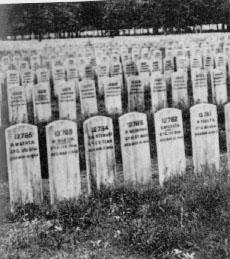
The standard of living in a Civil War encampment was disturbingly low, and sickness and death visited the camps often. Disease was the number one killer during the Civil War, caused in great part by primitive medical techniques and poor sanitation in the camps. The inadequate diet of the soldiers combined with the terrible camp sanitation led to such widespread disease that almost every soldier on both sides reported to sick call more than once during their service. Medicine was in short supply, and that which was available often was of no value, and was sometimes even did more bad than good, due in part to the fact that they were often made up of opiates, arsenic, and leads.
Epidemics often ran through whole armies, due in part to the fact that men from all over the country were all being brought together, exposing each other to previously unseen germs. Due to the rural life of many of the soldiers, many had never been exposed to such childhood diseases as measles, mumps, chickenpox, and scarlet fever. Thousands died of these diseases during the first few months of the war. Contaminated water led to such diseases as Typhoid and Diphtheria, which were among the most widespread killers: Typhoid killed over 100,000, and Diphtheria killed even more. In all, over 400,000 soldiers died on both sides due to illness.
As many men as disease killed, the vast majority of deaths during the Civil War happened on the battlefields. The large bullets of the time inflicted incredible amounts of damage when they struck human flesh. In most cases, a victim died almost instantly from a bullet wound, or else bleed to death before they could receive medial attention. But some would argue that those who died quickly were the lucky ones. Any wound to the head or torso wound was considered untreatable, and victims were given heavy pain killers and let to die. If any of these victims did by chance survive the wound, they often died of infection. Wounds to the extremities, though, were considered treatable, and this is where battlefield surgeons directed most of their attention. A simple flesh wound to an extremity could often be stitched up, and barring the setting in of gangrene, would heal relatively well. If a bullet struck a bone, however, it would surely shatter it. This left amputation as the only feasible hope of recovery. During amputations, doctors, who had little idea of sanitation, often worked with filthy hands and instruments, passing germs by the millions from soldier to soldier. Surgery was done under some form of general anesthetic, but this only delayed the pain, as amputations was often long and tramatic.
Home Table of Contents Day in the Life Weapons Women during the War Facts and Tidbits Credits